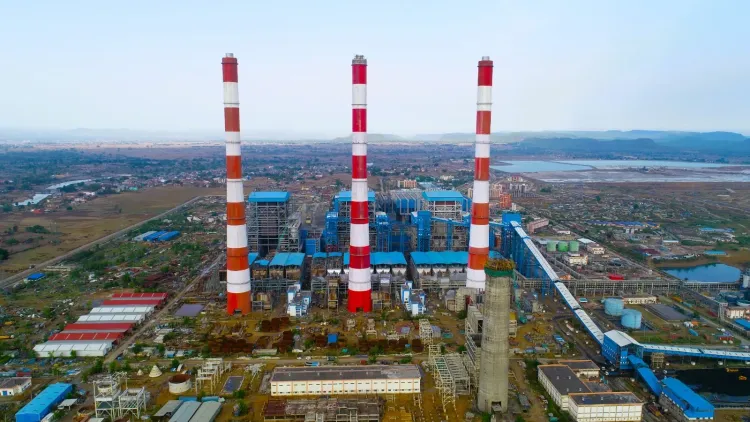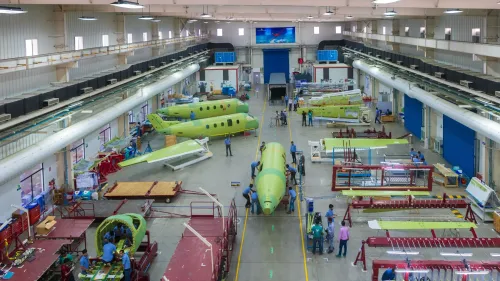Will Thermal Investments in India Surge to Rs 2.3 Lakh Crore by 2028?

Synopsis
Key Takeaways
- Thermal investments in India are projected to reach Rs 2.3 lakh crore by 2028.
- Private companies will significantly increase their investment contributions.
- Government aims for 80 GW of thermal capacity addition by 2032.
- Current projects include 60 GW in various stages of development.
- Majority of new capacities will operationalize post-2028.
New Delhi, July 16 (NationPress) Investments in the establishment of thermal electricity generation capacity are projected to double to Rs 2.3 lakh crore in India over the next three fiscal years leading up to 2028, as per a report released on Wednesday.
This renewed emphasis on the segment aims to address India’s increasing energy demand and the need for base load power, according to Crisil Ratings.
In the previous three fiscal years, private sector firms contributed a mere 7-8% of these investments.
However, in the upcoming three fiscal years, private companies are expected to significantly boost their investments, making up nearly one-third of the total, with central and state public sector enterprises covering the remainder, the report indicated.
The government has set an ambitious target to add at least 80 GW of thermal capacity by fiscal year 2032.
Currently, approximately 60 GW has either been announced or is at various implementation stages, with private developers accountable for around 19 GW, according to the report.
Most of the private capacity is anticipated to become operational only after fiscal 2028, due to the lengthy construction times involved.
“While the majority of these projects are brownfield expansions with low implementation risks, the timely delivery of essential equipment—especially boilers and turbines—remains a concern, given the limited supply capacity and considerable order backlogs at major manufacturers,” the report noted.
On the other hand, risks related to offtake, fuel, and tariff adequacy are considered low.
“Energy demand is projected to achieve a compound annual growth rate of 5.5%, reaching 2,000 billion units by fiscal 2028. Nearly 70% of the increased demand will be satisfied through renewable sources,” stated Manish Gupta, Deputy Chief Ratings Officer at Crisil Ratings.
However, due to the intermittent nature of renewable energy—solar energy is available only during the day, while wind energy is predominantly generated from May to September—thermal power remains essential for meeting base load demand consistently, he added.
Distribution utilities in four states have resumed offering 25-year thermal power purchase agreements (PPAs) to private sector generators after a hiatus of 9-10 years.
PPAs have committed to 6.1 GW of the 19 GW of private projects currently operational, with most of the remaining projects in various stages of completion.
The report suggests that distribution utilities are clearly inclined to commit to thermal power on a long-term basis to mitigate offtake risk.










